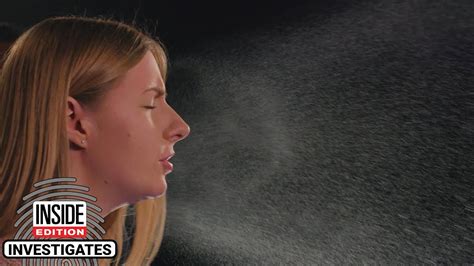Traveling
Sneeze Travel Distance

Introduction to Sneeze Travel Distance
When we think about the distance a sneeze can travel, it’s often in the context of how far the germs from our sneeze can spread, potentially infecting those around us. However, the actual distance a sneeze can travel is quite fascinating and has been the subject of various studies. Understanding this can help us appreciate the importance of covering our mouths when we sneeze and the role of ventilation in public places.
Physics Behind a Sneeze
A sneeze is a sudden, forceful expulsion of air from the lungs. This expulsion is so powerful that it can reach speeds of up to 35 miles per hour (approximately 56 kilometers per hour) and travel considerable distances. The physics behind a sneeze involves the rapid contraction of the diaphragm and the muscles in the chest and abdomen, which generates a high-pressure burst of air through the mouth and nose.
Factors Affecting Sneeze Travel Distance
Several factors can influence how far a sneeze travels, including: - Speed of the sneeze: The faster the air is expelled, the farther it can travel. - Direction of the sneeze: Sneezes that are directed forward, without any obstruction, can travel farther than those that are stifled or directed downward. - Environmental conditions: Air currents, humidity, and temperature can affect the travel distance of sneeze droplets. - Size of the droplets: Larger droplets tend to fall to the ground more quickly, while smaller droplets, often referred to as aerosols, can remain suspended in the air for longer periods and travel farther.
Research on Sneeze Travel Distance
Research has shown that the droplets from a sneeze can travel anywhere from a few feet to yards away from the person sneezing. A study using high-speed cameras observed that most of the larger droplets from a sneeze travel about 3 to 6 feet (approximately 0.9 to 1.8 meters) before falling to the ground, but smaller droplets can travel much farther, potentially reaching distances of 20 feet (about 6 meters) or more under the right conditions.
Implications for Public Health
Understanding the distance a sneeze can travel has significant implications for public health, especially during flu season or in the midst of a pandemic. It underscores the importance of: - Covering the mouth and nose with a tissue or the elbow when sneezing. - Washing hands frequently to prevent the spread of germs. - Maintaining good ventilation in public spaces to reduce the concentration of airborne pathogens. - Practicing social distancing to reduce the chance of coming into contact with droplets that may contain viruses or other pathogens.
Prevention Strategies
To minimize the risk of spreading illnesses through sneezing, several prevention strategies can be employed: - Use of masks: Wearing masks, especially in crowded areas or during outbreaks, can significantly reduce the spread of airborne pathogens. - Improved ventilation: Ensuring good airflow in buildings can help dilute and remove airborne pathogens, reducing the risk of infection. - Personal hygiene: Regular handwashing and avoiding touching the face can prevent the spread of germs.
| Distance | Description |
|---|---|
| 3 to 6 feet | Typical distance larger droplets travel before falling to the ground. |
| Up to 20 feet | Potential distance smaller droplets (aerosols) can travel under the right conditions. |
🤧 Note: Maintaining awareness of our surroundings and taking preventive measures can significantly reduce the spread of airborne pathogens.
In summary, the distance a sneeze can travel is influenced by various factors and can have significant implications for public health. By understanding these factors and implementing simple preventive strategies, we can reduce the risk of spreading illnesses and create a healthier environment for everyone. This knowledge empowers us to take proactive steps in protecting not just our own health, but also the health of those around us, contributing to a more resilient community.